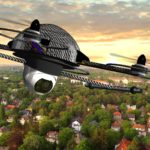 HVAC contractors are hearing more and more about the IoT these days. Some installers in the construction industry are already at the forefront of using the technology associated with it.
HVAC contractors are hearing more and more about the IoT these days. Some installers in the construction industry are already at the forefront of using the technology associated with it.
So, what is the IoT? Simply put, it means the Internet of Things and refers to the vast network of objects or “things” that are connected together using the Internet. Each “thing” is assigned an IP (Internet Protocol) address, a series of numbers divided by periods or dots that is (hopefully) unique.
The term Internet of Things was first used in 1999 by Kevin Ashton, Executive Director of the Auto-ID Center at MIT. He had been involved with installing chips into product packaging to improve tracking of inventory by communicating wirelessly with computers.
There is now a new Internet Protocol called IPv6. This features an extremely large address space that could potentially allow every single thing on the planet to have a unique ID. This, coupled with the expansion of broadband Internet and the drop in price of smart devices has led to an explosion of things being added to the IoT.
Smart company, smart home
One of the most successful companies in this field has been Nest Labs. In 2011 the small company introduced their Nest Thermostat. This attractive looking device was controlled wirelessly by a smart phone, and it learned what temperature settings and timing building occupants preferred. It wasn’t long before the company was gobbled up by Google and now all kinds of companies are jumping onto the IoT bandwagon.
The IoT lends itself really well to the HVAC industry as sensors have already been used in a lot of equipment for years. The next logical step was to connect these sensors to the Internet either through wired connections or, more likely, wirelessly by WiFi to a central router or through mobility service. Once the data enters the Internet it can be stored in databases and monitored by applications.
Equipment maintenance has been an obvious area for IoT connection. An example is software from a new startup called Augury. According to their website: “Every mechanical system can be characterized by the sound that it makes – machines ‘talk’ and we understand their language.”
Their system uses data from vibration and ultrasonic sensors in HVAC equipment. It compares current data with previous data from the same machine, as well as data collected from similar machines. Their platform can detect the slightest changes and warn of developing malfunctions. This analysis is done in real-time and the results can be displayed on a smartphone within seconds.
They also provide an online management platform accessible from any Internet-connected computer that displays the status of all monitored equipment and assists in making informed, accurate and efficient maintenance decisions.
Another of the most important aspects of HVAC to be monitored is ductwork. Sensors can be placed in ducts to measure airflow, static pressure and temperatures.
In an article for Contracting Business, Rob Falke, president of the National Comfort Institute explains that static pressure allows installers to “see” the system in a new perspective. “Airflow becomes visible. The result of measuring static pressure is the ability to prescribe duct renovation work. You begin to see that the duct system is what controls comfort and efficiency. Only by getting the ducts operating properly can you assure the system as a whole is operating properly.”
Not only does this data prescribe the diameter of ducting but the best termination methods, such as which grille or diffuser to use.
The IoT promises to improve many aspects of the HVAC industry from preventive maintenance, responsiveness and increased energy efficiency to improving contractors’ work processes and the comfort of their customers.


